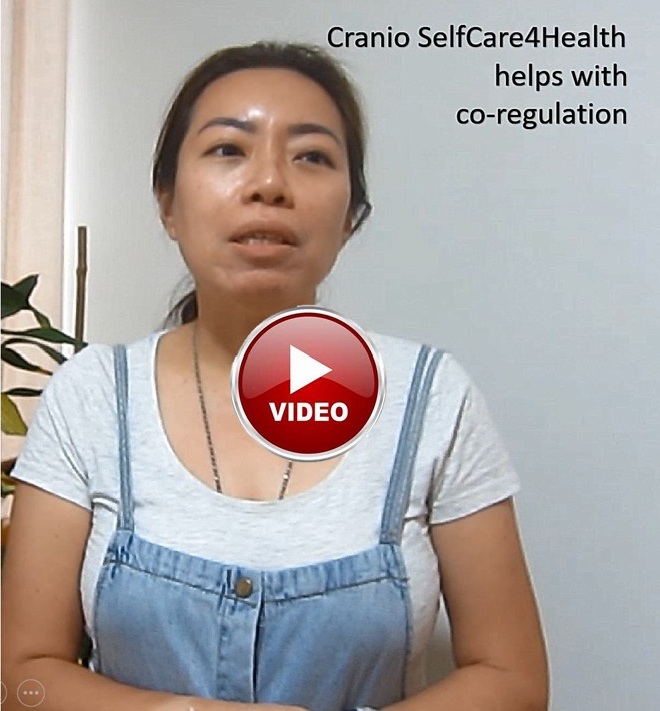Cranio SelfCare4Health – Co-regulation
to Self-regulation

https://youtube.com/shorts/HHE0f6oVkDU
In the following video, a
mother shares her experience of managing a situation where her children were
boisterous and quarreling with one another. By regulating her own nervous
system, she was able to gently manage the situation and help her children calm
down. This demonstrates how the co-regulation of her nervous system effectively
influenced her children's nervous systems, creating a harmonious and peaceful
environment.
In Cranio SelfCare4Health,
moving from co-regulation to self-regulation is crucial for clients' healing
and growth. Therapists begin by creating a supportive, nurturing environment
that helps clients feel safe and connected. Using gentle touch, therapists
guide clients in tuning into their bodily sensations and emotions. This initial
phase, known as co-regulation, involves the therapist's mindful presence,
fostering a sense of safety and connection.
As clients become more aware
of their bodies, they often experience deep relaxation and emotional release.
This positive resonance helps clients develop self-awareness and the ability to
self-regulate their nervous systems. Over time, clients learn to manage their
own stress and promote their well-being independently, feeling more empowered
and in control of their healing journey.
Cranio SelfCare4Health
sessions are calm and soothing, allowing clients to explore and process their
experiences at their own pace. This gentle approach helps clients build trust
in their bodies and the therapeutic process, ultimately leading to a deeper
sense of self-regulation and resilience.
When clients move from
co-regulation to self-regulation, their autonomic nervous system (ANS) responds
positively. The ANS, which controls involuntary bodily functions like heart
rate and digestion, can shift from a state of stress (sympathetic nervous system)
to a state of relaxation and healing (parasympathetic nervous system). This
shift promotes overall well-being, reduces stress, and enhances the body's
natural ability to heal.
When you learn the skill of
self-regulation, you can apply it in any situation. For instance, the mother in
the video effectively applied her self-regulation skills to manage her
children's behavior. Similarly, you can use these skills to navigate stressful
situations at work, manage conflicts in relationships, or simply maintain your
calm and focus in daily life. By regulating your own nervous system, you create
a ripple effect, positively influencing those around you and fostering a sense
of calm and harmony in various environments. This adaptability makes
self-regulation a valuable tool for enhancing overall well-being and resilience
in all aspects of life.
Ultimately, as clients become
proficient in self-regulation, they can return to co-regulation in their
interactions with others, just like the mother in the video. This cycle of
co-regulation and self-regulation strengthens relationships, fosters mutual understanding,
and enhances collective resilience and well-being.
| 

